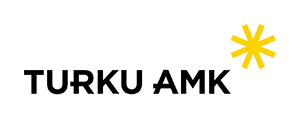The impact of food poverty on childhood overweight

Childhood and adolescent obesity is a growing public health problem with significant implications for child and adolescent well-being both nationally and internationally. One contributing factor that is gaining increasing attention is the consumption of nutrient-poor foods. These foods, perceived to be high in calories but lacking in essential nutrients, have been linked to adverse health outcomes, including obesity. Understanding the relationship between nutrient-poor foods and childhood overweight and obesity is crucial for developing effective prevention and intervention strategies.
There is no definition of the term “food insecure” in Finnish. Scientific articles on the impact of diet on obesity have primarily focused on the impact of high energy foods and sugary drinks on obesity. International articles and studies show that there is no unanimous definition of food insecurity. These publications use the abbreviation EDNP, which stands for energy-dense, nutrient-poor. EDNP foods are associated with an increased risk of obesity.
Nutritionally poor foods include sweets, chocolate, cakes, sweet and savoury biscuits, sweet and savoury snacks, sugar-sweetened and artificially sweetened drinks and alcoholic beverages. For example, sweet biscuits contain mainly sugar and saturated fatty acids but no dietary fibre, protein or other micronutrients, so they count as nutritionally deficient foods.
Sweetened beverages and fast-food seem to be contributing factors to childhood obesity
A poor diet is defined as a diet that contains low amounts of vegetables, whole grain products and excessive amounts of sugars and salt. Poor diets are associated with childhood obesity and improving diets can prevent the development of obesity.
Both sweetened beverages and high fast-food consumption were cited in several sources as contributing factors to childhood obesity. Children who consumed sweetened soft drinks had twice the risk of morbid obesity as children who did not consume sweetened drinks. There may be a link between fast food and obesity, mainly due to large portion sizes and high glucose levels.
Ultra-processed foods are one of the major causes of obesity in developing countries, as they are high in calories and low in nutrients. In addition, they are cheap, and thus more accessible to people from low socioeconomic backgrounds. Higher meat intake and intake of processed cereals were also associated with an increased risk of overweight or obesity, while a reduced risk was associated with higher intake of whole grain products. Future research is needed to investigate the links between food and drink consumption and childhood obesity.
Food poverty and poverty go hand in hand
Ultra-processed food is often much cheaper than food with better nutritional value, which increases its consumption among poorer populations. This leads to less consumption of foods rich in fibre and nutrients, such as fruit and vegetables.
A higher socioeconomic status is associated with lower BMI. This is partly explained by the fact that starchy food is often cheaper and, due to its low fibre content, does not keep you full for long. As socio-economic status increases, anaemia and vitamin A deficiency also decrease. In addition, mortality decreases as BMI decreases and socioeconomic status increases.
In Latin American countries, efforts have been made to address the ongoing trend of poorer populations consuming more nutritionally poor foods by requiring warnings on food packaging about high fat and sugar content. Taxes have also been raised in Barbados, Mexico and Colombia. The problem in Latin America is that healthier food, i.e. food richer in nutritional value, is much more expensive and therefore out of reach of poorer people.
What is Cielo?
Cielo-project (Innovative Curriculum for Latin America to Build Capacity in HEIs to Prevent Obesity), is run by 3 European and 9 Latin American universities, specifically from the countries of Chile, Costa Rica, and Mexico.
The objective of this project is to increase the skills of HEI teachers and students in the field of health promotion in Latin America in order to prevent childhood obesity and promote mental health. This purpose will be achieved through the cooperative development of a postgraduate training program and an eToolkit mobile application for the nine participating Latin American universities.

Authors
Anni Saksi
Public health nurse student
Turku UAS
Maika Kummel
PhD, Principal lecturer, Public health nurse
Turku UAS
References
Asgari, E.; Askari, M.; Bellissimo, N. & Azadbakht, L. 2022. Association between Ultraprocessed Food Intake and Overweight, Obesity, and Malnutrition among Children in Tehran, Iran. International Journal of Clinical Practice, 24 Aug 2022, 2022:8310260. Europe PMC. Viitattu 13.4.2024. https://europepmc.org/article/MED/36081808#sec3.
Biltoft-Jensen, A.; Matthiessen, J.; Hess Ygil, K. & Christensen, T. 2022. Defining Energy-Dense, Nutrient-Poor Food and Drinks and Estimating the Amount of Discretionary Energy. PubMed Central. National Library of Medicine.
Nutrients. 2022 Apr; 14(7): 1477. Viitattu 10.4.2024. https://www.ncbi.nlm.nih.gov/pmc/articles/PMC9002576/.
Jakobsen, D. D.; Brader, L. & Bruun, J. M. 2023. Association between Food, Beverages and Overweight/Obesity in Children and Adolescents – A Systematic Review and Meta-Analysis of Observational Studies. Nutrients, 15(3), 764. Viitattu 13.4.2024. https://doi.org/10.3390/nu15030764.
Katella, K. 2023. Why You Shouldn’t Rely on BMI Alone. Family Health. Yale Medicine. Viitattu 10.4.2024. https://www.yalemedicine.org/news/why-youshouldnt-rely-on-bmi-alone.
Kumari, S.; Shukla, S. & Acharya, S. 2022. Chilhood Obesity: Prevalence and Prevention in Modern Society. Cureus, 14(11): e31640. Europe PMC. Viitattu 13.4.2024. https://doi.org/10.7759/cureus.31640.
Malkamäki, E. & Sirviö, O. 2021. Antropometriset mittaukset ja niiden käyttöalueet. Kirjallisuuskatsaus. Savonia-ammattikorkeakoulu. Opinnäytetyö. Viitattu 10.4.2024. https://www.theseus.fi/bitstream/handle/10024/499032/Malkamaki_Emma_%20 Sirvio_Olga.pdf?sequence=2&isAllowed=y.
Malta, D.C.; Gomes, C.S.; Felisbino-Mendes, M.S.; Veloso, G.A.; Machado, I.E.; Cardoso, L.; Azeredo, R.T.; Jaime, P.C.; de Vasconcelos, L.L.C.; Naghavi, M. & Ribeiro, A.L.P. 2024. Undernutrition, and overweight and obesity: the two faces of malnutrition in Brazil, analysis of the Global Burden of Disease, 1990 to 2019. Public Health. Volume 229, April 2024, Pages 176-184. ScienceDirect. Viitattu 13.4.2024. https://www.sciencedirect.com/science/article/abs/pii/S0033350624000295?via %3Dihub.
Mustajoki, P. 2015. Ruokaympäristön muutos selittää pääosan väestöjen lihomisesta. Lääketieteellinen aikakausikirja Duodecim. Suomalainen lääkäriseura Duodecim. Helsinki: Lääketieteellinen aikakausikirja Duodecim 2015;131(15):1345–52. Viitattu 10.4.2024. https://www.duodecimlehti.fi/duo12373.
Nyberg, R. 2017. Älä laihduta -päivä 6.5.17: Painolukema, BMI ja terveys. SisäSuomen SYLI ry. Viitattu 10.4.2024. https://sisasuomensyli.fi/1_3_7_l-laihdutap-iv-6.5.17-painolukema-bmi-ja-terveys.html.
Papandreou, D.; Andreou, E.; Heraclides, A. & Rousso, I. 2013. Is beverage intake related to overweight and obesity in school children? Hippokratia, 01 Jan 2013, 17(1):42–46. Europe PMC. Viitattu 13.4.2024. https://europepmc.org/article/MED/23935343.
Rosenheck, R. 2008. Fast food consumption and increased caloric intake: a systematic review of a trajectory towards weight gain and obesity risk. Obesity reviews (2008)9, 535–547. Wiley, Online Library. Viitattu 13.4.2024. https://doi.org/10.1111/j.1467-789X.2008.00477.x.
Saari, A. 2024. Lasten painoindeksi (ISO-BMI). Lääkärikirja Duodecim. Kustannus Oy Duodecim. Viitattu 10.4.2024. https://www.terveyskirjasto.fi/dlk01073.
Sahoo, K.; Sahoo, B.; Choudhury, AK.; Sofi, NY.; Kumar, R. & Bhadoria, AS. 2015. Childhood obesity: causes and consequences. Journal of Family Medicine and Primary Care. 2015 Apr.; 4(2): 187–192. Viitattu 9.4.2024. https://journals.lww.com/jfmpc/fulltext/2015/04020/childhood_obesity__causes_ and_consequences.8.aspx.
Tarro, S. 2023. Early childhood diet quality and risk of overweight – associations with individual, family and neighbourhood factors. Turun yliopiston julkaisuja. Sarja D osa 1740. Medica – Odontologica. Painosalama, Turku. Viitattu 10.4.2024. https://www.utupub.fi/bitstream/handle/10024/175772/AnnalesD1740.pdf?seque nce=5&isAllowed=y.
The Lancet Regional Health – Americas. 2023. The coexistence of obesity and hunger in Latin America and the Caribbean. Volume 28, December 2023, 100653. Viitattu 27.4.2024. https://www.sciencedirect.com/science/article/pii/S2667193X23002272.
THL 2023. Rekisteriseuranta: Lasten ja nuorten ylipaino on edelleen huolestuttavan yleistä. Terveyden ja hyvinvoinnin laitos. Viitattu 9.4.2024. https://thl.fi/-/rekisteriseuranta-lasten-ja-nuorten-ylipaino-on-edelleenhuolestuttavan-yleista.
